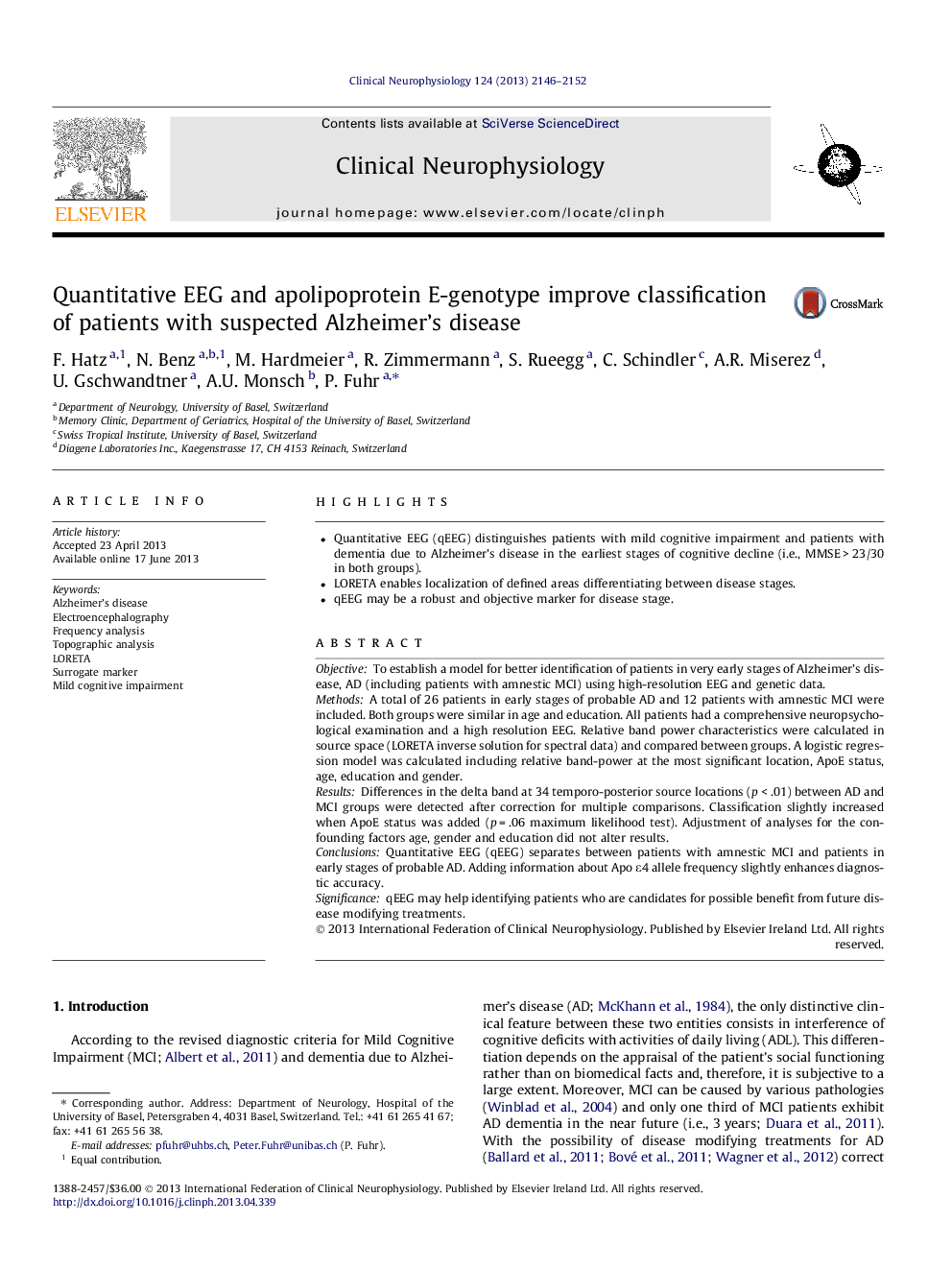| Article ID | Journal | Published Year | Pages | File Type |
|---|---|---|---|---|
| 3043316 | Clinical Neurophysiology | 2013 | 7 Pages |
•Quantitative EEG (qEEG) distinguishes patients with mild cognitive impairment and patients with dementia due to Alzheimer’s disease in the earliest stages of cognitive decline (i.e., MMSE > 23/30 in both groups).•LORETA enables localization of defined areas differentiating between disease stages.•qEEG may be a robust and objective marker for disease stage.
ObjectiveTo establish a model for better identification of patients in very early stages of Alzheimer’s disease, AD (including patients with amnestic MCI) using high-resolution EEG and genetic data.MethodsA total of 26 patients in early stages of probable AD and 12 patients with amnestic MCI were included. Both groups were similar in age and education. All patients had a comprehensive neuropsychological examination and a high resolution EEG. Relative band power characteristics were calculated in source space (LORETA inverse solution for spectral data) and compared between groups. A logistic regression model was calculated including relative band-power at the most significant location, ApoE status, age, education and gender.ResultsDifferences in the delta band at 34 temporo-posterior source locations (p < .01) between AD and MCI groups were detected after correction for multiple comparisons. Classification slightly increased when ApoE status was added (p = .06 maximum likelihood test). Adjustment of analyses for the confounding factors age, gender and education did not alter results.ConclusionsQuantitative EEG (qEEG) separates between patients with amnestic MCI and patients in early stages of probable AD. Adding information about Apo ε4 allele frequency slightly enhances diagnostic accuracy.SignificanceqEEG may help identifying patients who are candidates for possible benefit from future disease modifying treatments.
